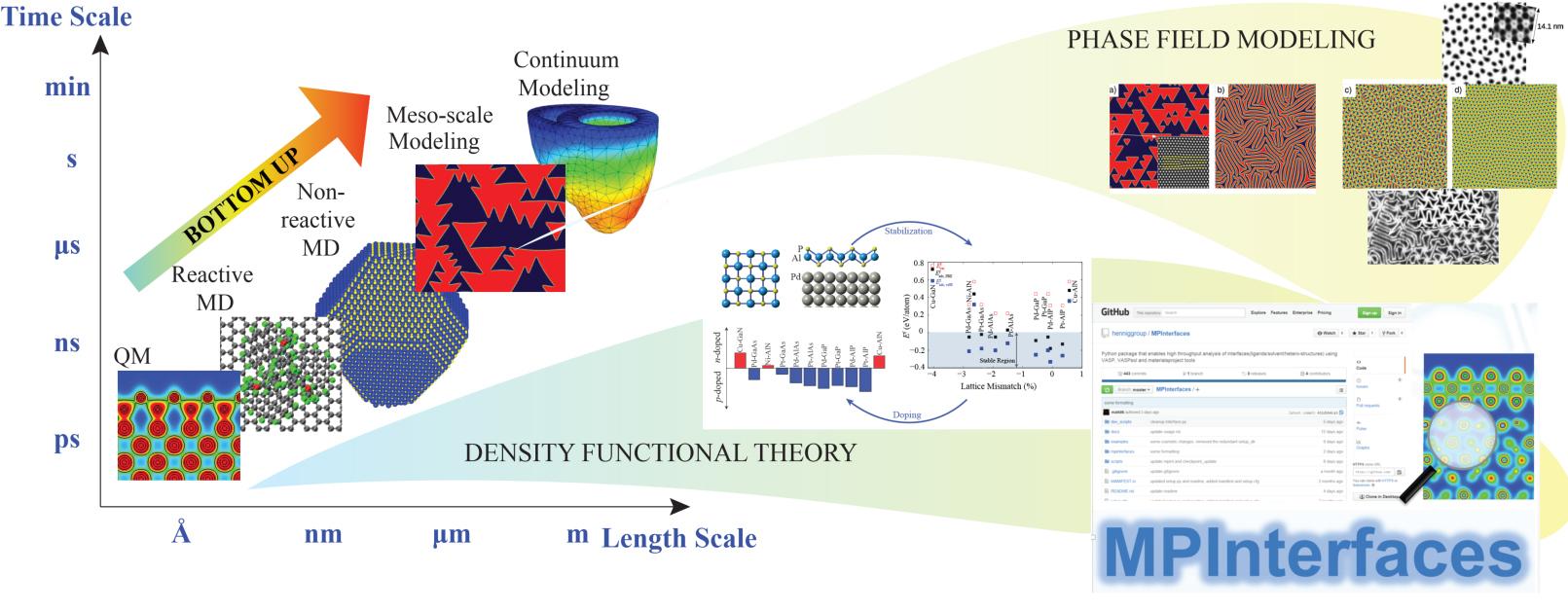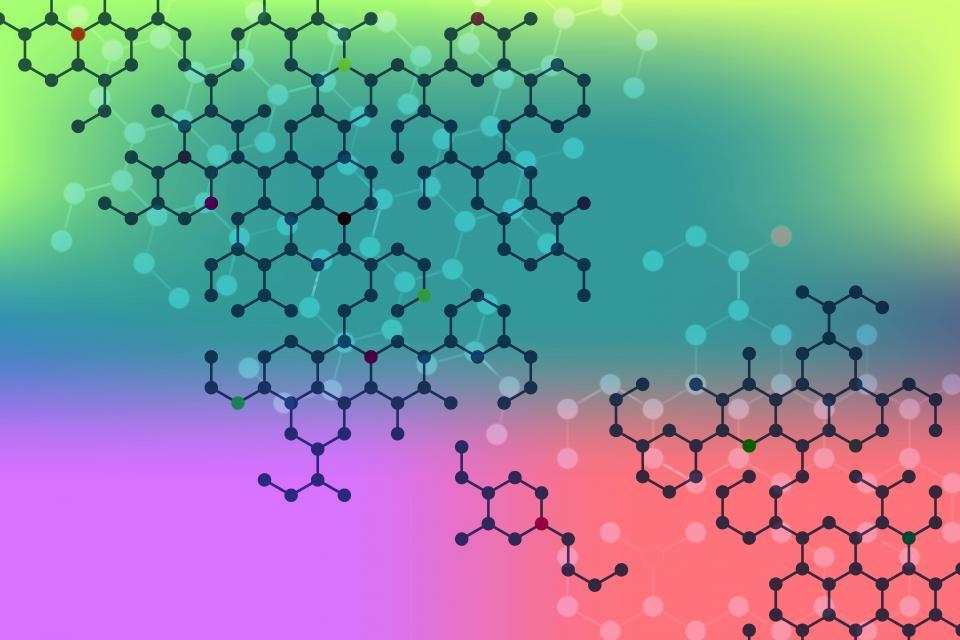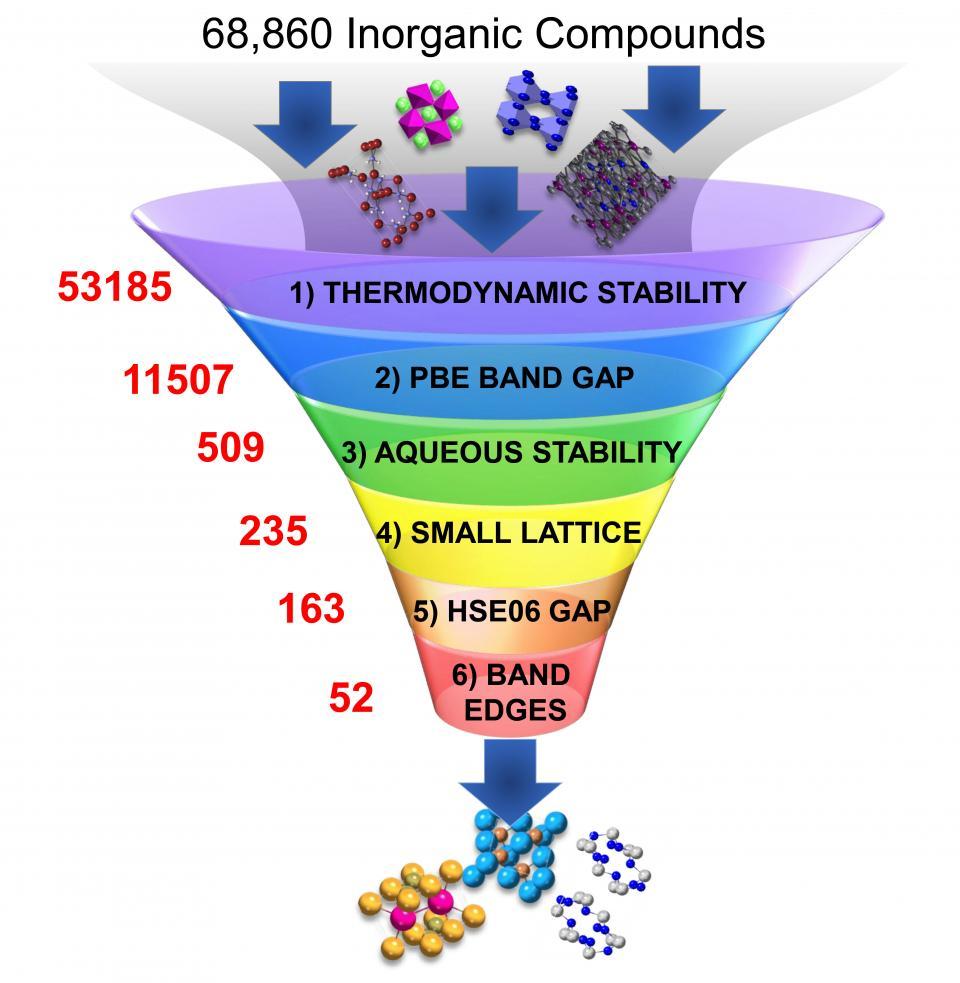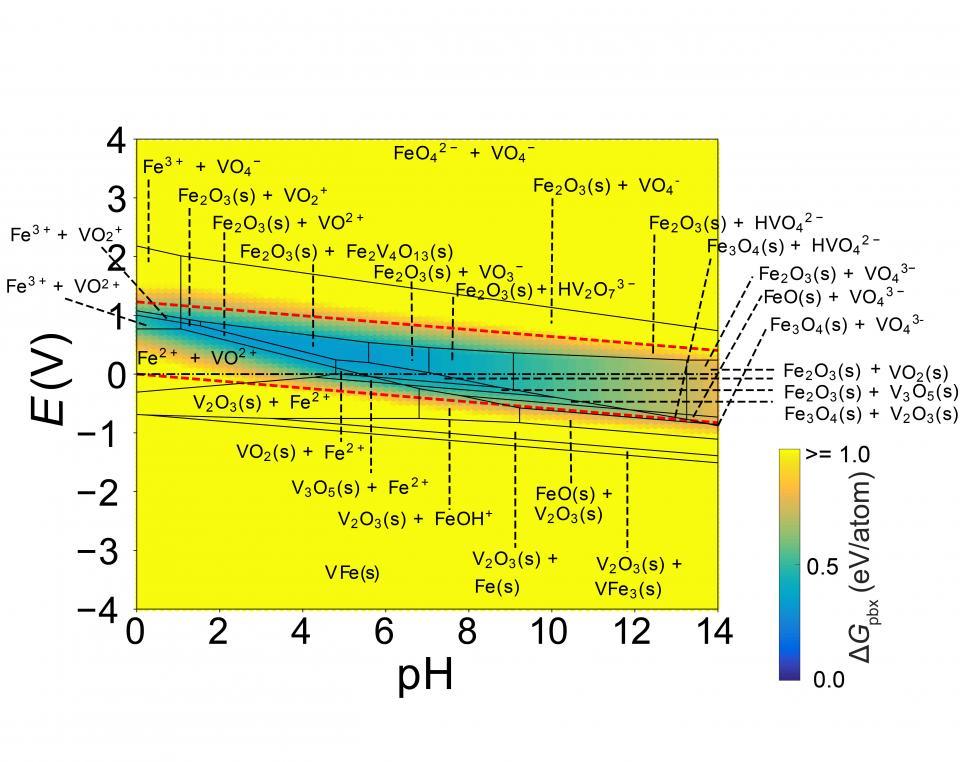
Research
Research

Computational Materials Design lab's research focuses on atomistic simulations of complex surfaces and interfaces. We develop and use quantum mechanical simulations as well as molecular dynamics simulations to push the boundaries of knowledge in nanomaterials, 2D materials, and surface dominant-phenomena. Contributing to the Materials Genome Initiative, our lab develops scientific-software infrastructure to enable high-throughput computational studies, facilitating an accelerated discovery and design of novel materials.
Active topics of interest are highly motivated by practical applications with an overarching goal of developing a computational Surface Genome database of materials. Towards this goal, we actively collaborate with experimentalists and theorists within ASU and several other universities and national laboratories, including Caltech, NIST-Gaithersburg and the Lawrence Berkeley National Lab. Some of the ongoing projects in the CMD lab are:
Active topics of interest are highly motivated by practical applications with an overarching goal of developing a computational Surface Genome database of materials. Towards this goal, we actively collaborate with experimentalists and theorists within ASU and several other universities and national laboratories, including Caltech, NIST-Gaithersburg and the Lawrence Berkeley National Lab. Some of the ongoing projects in the CMD lab are:
Synthesis of 2D Materials

Two-dimensional (2D) materials offer unique properties, very different from their bulk counterparts, due to their large specific surface area and quantum confinement in one direction, making them ideal for several nano-electronic, energy-conversion, chemical sensing, and biological applications. A major roadblock to the commercialization of 2D materials has been the lack of scalable large-area synthesis of high-quality flakes. Moreover, the majority of the more than 1000 2D materials predicted in the recent past are yet to be experimentally synthesized. In our previous work, we have shown that ab-initio simulations can be used to find substrates that energetically stabilize 2D materials, possibly allowing easier growth of these materials, as well as functionalize their structure and properties. Currently, we are studying the nucleation and growth of low-dimensional materials using multi-scale simulation and modeling. This work is being performed in close collaboration with experimental and theoretical groups across the country.
Photocatalyst Discovery and Design

Solar-driven conversion of water or reduction of CO2 to chemical fuels promises an alternative renewable source of energy. Major advancements have been made in improving the efficiencies and product selectiveness of currently known photocatalysts, nonetheless, a need for rational materials discovery has been noted by the community as a step towards economical industrial application. In our group, we perform first-principles simulations based exploratory searches of materials that can be easily synthesized, are robust in the highly reducing or oxidizing conditions, can harvest solar light and present a wide range of electronic properties suited for extracting competing products. Current efforts are directed towards the design of co-catalysts and tandem photocatalysts that promise spontaneous separation of electrons and holes; and at the same time an immunity towards corrosion-degradation.
Electrochemical Stability of Materials

We have developed a first-principles based generalized model for assessing the propensity of thermodynamically stable as well as metastable inorganic materials toward electrochemical stabilization, passivation, or corrosion in aqueous media. This formalism allows us to evaluate the relative Gibb’s free energy of arbitrary materials with respect to Pourbaix stable species at any pH, voltage, temperature, and concentration of ions. This formalism is useful for general corrosion management as well as for optimizing operating conditions for aqueous-media-based applications like photocatalysis. An open-source web application based on the formalism is available at https://materialsproject.org which can be used to determine the electrochemical behavior of more than 80,000 materials available through the Materials Project database. Future work is focused on integrating this formalism with the Point Defect Model for studying time-dependent corrosion and passivation behavior of materials.



